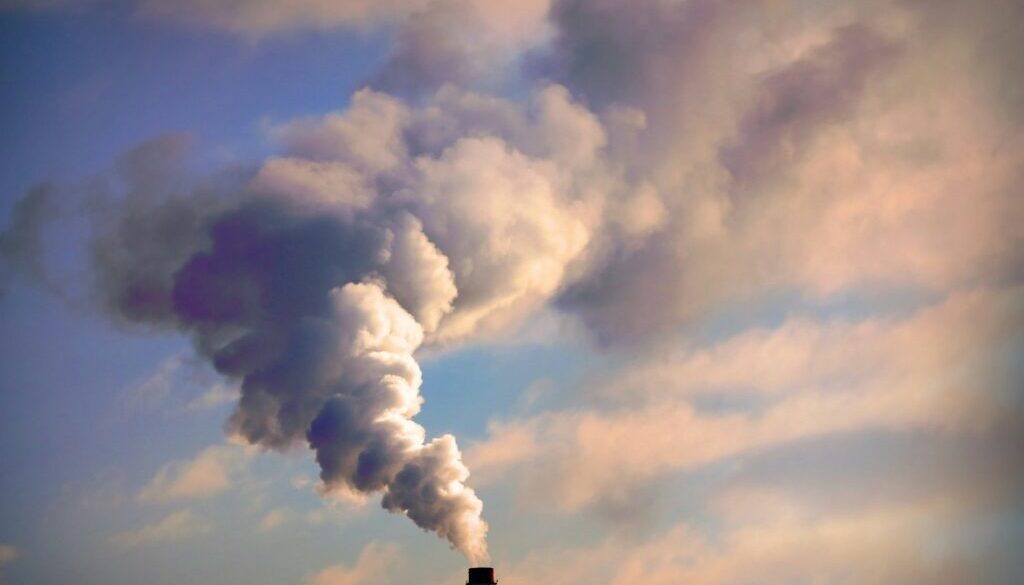Fossil fuel planned expansions could thwart efforts to slow climate change, report finds
By Dana Drugmand
Plans for an expanded footprint of US fossil fuel-derived chemical production facilities would unleash millions of tons of heat-trapping emissions that could undermine efforts to confront the climate crisis, according to a report issued Tuesday.
The analysis by the Center for International Environmental Law (CIEL) determined that 70 projects in various stages of development would create total annual emissions exceeding that of US commercial aviation, and on par with the annual emissions of 39 coal plants.
“The planned petrochemicals buildout in the United States is a profound threat to the climate,” the CIEL report warns. “If built, these petrochemical facilities will generate huge greenhouse gas emissions and lock in fossil fuel production for decades.”
The petrochemical sector in the US already emits about 335 million metric tons of CO2-equivalent pollution annually – more than the annual emissions of entire countries like Spain – and the planned expansion is estimated to add at least another 153.8 MMT of annual emissions, the analysis finds.
As the new report explains, the petrochemical sector is a growing yet underrecognized source of climate pollution, set for rapid expansion as fossil fuel usage in the energy sector starts to wane. The International Energy Agency projects that petrochemicals will be the biggest driver of global oil demand, accounting for nearly half of the demand growth through 2050.
American Fuel & Petrochemical Manufacturers (AFPM), the chief US trade association for the petrochemical industry, did not immediately respond to a request for comment. AFPM says on its website that it “supports the aspiration of the Paris Accord to address climate change through global cooperation and greenhouse gas emissions reductions” and that greenhouse gas emissions from the fuel and petrochemical industries are subject to federal and state regulations.
Ammonia Expansion
Ammonia production accounts for the largest share (more than one-third) of the projected emissions. The US produces 14 million metric tons annually of this chemical, which is comprised of nitrogen and hydrogen. New projects would add at least 54.5 million metric tons in production capacity, nearly quadrupling current ammonia production. Since nearly all ammonia is made from ‘natural’ or methane gas, the report argues that this ammonia expansion props up the fossil fuel sector under the guise of climate solutions.
Notably, while the vast majority of ammonia (88%) typically goes towards making nitrogen fertilizer, much of the planned new production appears to be premised on alternative uses of the chemical in the energy sector, including as a hydrogen carrier or carbon-free shipping fuel. Many of the proposed ammonia project descriptions, according to the report, mention potential uses for transporting hydrogen or as a shipping fuel or use in power stations.
But combusting ammonia as fuel risks creating nitrous oxide emissions, and nitrous oxide is a much more potent greenhouse gas with 273 times the heat-trapping potential compared to CO2 over 100 years. Ammonia is also highly toxic, presenting practical challenges for using it as a shipping fuel.
“The high emissions from fossil ammonia production, together with the practical limitations of ammonia and its potential greenhouse gas emissions when used as a fuel, should raise concerns over the development of a large ammonia economy,” the report argues.
Much of the proposed ammonia production is touted as “low carbon” due to plans to use carbon capture and storage (CCS), a controversial technology for reducing carbon pollution at industrial facilities. The analysis identified more than 30 planned ammonia projects that say they will use CCS. While proponents claim that carbon capture and storage is an effective method for mitigating emissions, the report contends that on the contrary, CCS has been a proven failure. The technology captures far less CO2 from smokestacks than proponents claim, and at best would only be able to address about 60 percent of the lifecycle emissions of the proposed petrochemical facilities. And yet, the planned projects that include CCS would benefit from federal subsidies, enabling “a potentially massive buildout of fossil fuel dependent production” subsidized by taxpayers, according to the report.
The CIEL analysis took a full lifecycle approach to estimating the projected emissions of the petrochemical buildout, including upstream and downstream phases and incorporating estimates for emissions associated with CCS. While researchers identified 118 planned projects, production data was available for only 74 of them, meaning that roughly a third of the petrochemical buildout were not covered in the analysis.
Already “buckling”
Half of the estimated new greenhouse gas emissions from the buildout come from just ten “megaprojects,” the report finds, and much of the expansion is concentrated in the US Gulf Coast and Appalachia regions where low-income and communities of color are overburdened with industrial pollution.
“This buildout wouldn’t just derail climate goals, it would further devastate communities,” Jane Patton, a Louisiana-based fossil economy campaign manager at CIEL, said in a statement. “In Louisiana, we’re already buckling under the burden of toxic pollution and the climate crisis as we live with the daily threats of rising seas, failing infrastructure, and skyrocketing home insurance costs. My neighbors along the Mississippi River are fighting to end the scourge of industrial pollution in our air and water while being expected to brave cancer risks up to 800 times the national average. US leaders must act now.”
The report calls for permitting authorities to reject petrochemical industry expansion and for banks and other financiers to stop financing the buildout of these facilities. It also recommends that Congress act to eliminate federal subsidies for CCS and fossil fuel-based hydrogen, and that policymakers and businesses reject the notion that hydrogen or ammonia derived from fossil fuels can be rendered “clean” or low-carbon through the use of CCS.
“Our communities and the climate cannot afford any more petrochemical pollution,” Patton said.
(Featured image by Unsplash+ in collaboration with Getty Images.)




